Nissan Has Forgotten How to Take Styling Risks
By Chris Haak
03.06.2008
In the mid 1990s, Nissan found itself in a very difficult position. Sales were falling, the lineup was dull and unexciting, Infiniti had just been left in the dust by its rival Lexus, and the company was teetering on the edge of bankruptcy.
French auto giant Renault stepped in with a large investment in Nissan, and sent Carlos Ghosn, then an executive vice president at Renault, to Nissan to act as COO. Ghosn implemented necessary cost cuts and restructuring, along with several new models (many of which were on the drawing board when he arrived), and Nissan has been pretty consistently successful – in terms of sales and in financial terms – since then.
Much of Nissan’s success in the early part of the 21st century can be attributed to products that were introduced around that time. Some bona fide hits during that timeframe included several Nissan models: the Altima sedan, Murano crossover, Frontier midsize pickup, as well as several Infiniti models: the G35 sedan and coupe and the FX35 and FX45 crossover. These successful models had a few things in common: they were generally better looking, better performing, and a better value than most of their competition. Not only that, but vehicles like the Murano and FX crossover practically defined their own segments, so buyers rewarded Nissan for its innovation by snapping up the vehicles.
The life cycle of most of the aforementioned vehicles has ended and Nissan has created new generations of all of them. Unfortunately, probably spoiled by the success of the prior generation, Nissan has chosen to replace each of the above vehicles with new versions that – absent a trained eye – are nearly impossible to distinguish from their predecessors. Sure, the new versions have additional comfort and safety features, usually more horsepower, perhaps better fuel economy – but the fact remains that the risk-taking culture of a company on the ropes has been replaced by a risk-averse culture of gradual improvement and styling tweaks instead, and that’s unfortunate.
Let’s take a look at a few examples. First, the 2005 Altima (above) and the 2007 Altima (below).
First, the 2005 Altima (above) and the 2007 Altima (below).
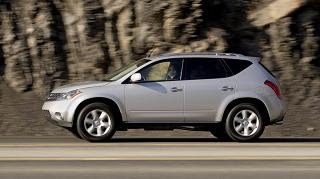 Next is the 2007 Murano (above) and the new 2009 Murano (below).
Next is the 2007 Murano (above) and the new 2009 Murano (below).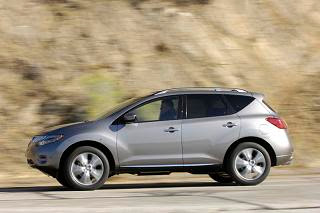
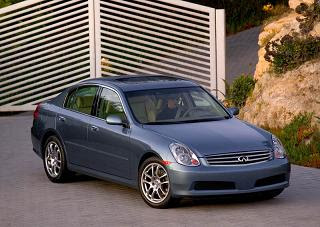 Here is the 2006 Infiniti G35 sedan (above) and the 2007 G35 sedan (below).
Here is the 2006 Infiniti G35 sedan (above) and the 2007 G35 sedan (below).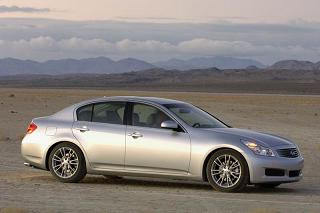
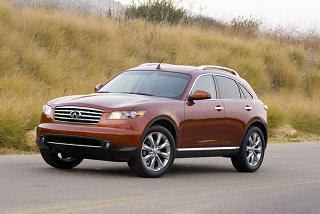 Last, let’s compare the 2006 Infiniti FX45 (above) with the just-revealed 2009 FX50 (below).
Last, let’s compare the 2006 Infiniti FX45 (above) with the just-revealed 2009 FX50 (below).
I won’t argue that the newer versions of the above vehicles do not look more modern and tidy – and probably more attractive than their forbears. But really, aside from a tuck here, a tweak there, and some extra curves on the body, is there really much visual difference between the generations? The extraordinary development costs of any new vehicle today mean that styling has to last for five years or more; when after those five years, the new version looks almost like the five year old version, it means that ten years from the Murano’s 2002 debut, the 2012 Murano will look eerily similar to the 2002 model. Was this such a good idea on Nissan’s part?
It’s not to say that Nissan does not take risks; the upcoming GTR supercar looks unlike any other Nissan model, and only shares a few styling cues with its previous generations. It’s also a risk for Nissan dealers to sell a $70,000-plus sports car when the next-most-expensive vehicle in the showroom is somewhere around $30,000 less expensive. I hope for Nissan’s sake that customers disagree with me and that they aren’t worried that their 2012 Altima looks nearly identical to a 2002 model, but the fact is, Nissan has clearly made the choice not to take styling risks with this latest generation of products.
Update 8:00 p.m.: In response to seano’s comment below, and to add a more international flair to this post, here are photos of the X-Trail: The 2004 Nissan X-Trail (above) and the 2008 Nissan X-Trail (below).
The 2004 Nissan X-Trail (above) and the 2008 Nissan X-Trail (below).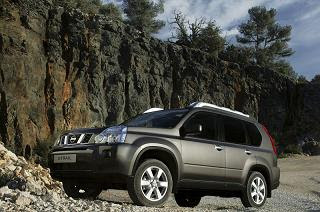
Thanks for the tip, seano!
COPYRIGHT Full Metal Autos – All Rights Reserved


